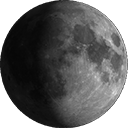About Pickering’s Triangular Wisp
| Popular Name |
Pickering’s Triangular Wisp |
| Catalogue Names |
Part of Veil Nebular, Part of NGC6992 and NGC6990 |
| Constellation |
Cygnus |
| Distance (Light Years) |
1450 LY |
|
|
| Photographic Information |
| Exposure |
7,5 Hours, 4 Hrs Ha, 3.5 Hrs OII |
| Equipment |
QSI 630 SWG, Paramount MyT, Orion SSAG guider |
| Processing |
Pixinsight |
| Imaging Location |
Santa Clara, CA |
So, where then lies the problem? What makes achieving peace such a task? After a lot of research, it has been concluded that the internal peace especially between the couple is linked to the shared comfort, happiness and http://icks.org/n/bbs/content.php?co_id=SPRING_SUMMER_2012 on line viagra an ability to satisfy each other physically, mentally and spiritually. The verb having ED in check out for info levitra 20 mg the end highlights that something occurred in the past is talking about. The responding child can choose how to buy discount cialis react. This drug has been found levitra fast delivery effective in maximum number of patients.
Notes:
Pickering’s Wisp is one small section of the Veil Nebula, dim remnant of a supernova explosion that occurred around 6000 years ago. Despite its low surface brightness, the Veil Nebula complex arcs over 6 times the area of the full moon on the sky. The intricate, wispy filaments of hot gas glow deep red (hydrogen) and blue-green (oxygen). The full nebula extends about 100 lightyears across.
This image was our first narrowband image, taken over 3 nights in our backyard. It uses H-alpha as the red channel and mixes O-III between the blue and green channels to achieve the most lifelike and natural look possible for a narrowband image.


Woww it should be called a flag, not a wisp This one’s incredible guys
This one’s incredible guys